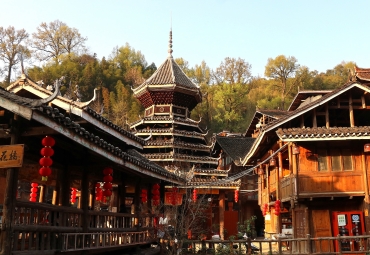Scientist focuses on mine exploration in Guizhou

Zhou Qi (L2) discusses with team members at a mine lot. [Photo/ddcpc website]
Zhou Qi, 58 years old, is a Party member and chief scientist of the Bureau of Geology and Mineral Exploration and Development of Guizhou province. During his 40-year career, he has strived to innovate and explore more manganese mines in the province.
Zhou started working as a member of the bureau's No 103 geological team after graduating when he was 17. As one of the few young people on the team, Zhou learned from senior workers through field studies.
In 1999, Zhou led the team to survey manganese resources in Guizhou's Songtao Miao autonomous county. After preliminary prospecting, Zhou and other senior experts believed there was a high possibility of finding manganese mines near Bijia Mountain and Chaye Mountain.
However, the exploration of Bijia Mountain didn't result in the discovery of any manganese mines. With his experience of mineral exploration and knowledge of Guizhou's geological environment, Zhou believed that there must be manganese mines in the Wuling Mountain area in eastern Guizhou.
In 2000, Zhou's team finally found a manganese mine in Songtao's Xixibao area. That same year, Zhou started pursuing advanced studies at the China University of Geosciences and expanded the theoretical category of manganese mine formation.
After further exploration, Zhou and his team found four world-class ultra-large manganese deposits and one super-large manganese-enriched deposit, meaning Guizhou had the most manganese resources of any place in Asia.
In recent years, Zhou and his team released the first detailed report on a super-large manganese-enriched deposit in China and realized the digital exploration of mines.
After being selected as a member for the 20th CPC National Congress this year, Zhou feels he is undertaking more responsibility and aims to continue his work in mine exploration to find more mineral resources and support Guizhou's high-quality development.
All rights Reserved. 京ICP备13028878号-8







 Overview
Overview Guiyang
Guiyang Guian New Area
Guian New Area Liupanshui
Liupanshui Anshun
Anshun Qianxinan
Qianxinan Qiandongnan
Qiandongnan Qiannan
Qiannan Zunyi
Zunyi Tongren
Tongren Bijie
Bijie Guizhou commits to culture preservation and rural vitalization
Guizhou commits to culture preservation and rural vitalization Guizhou voice at 2025 national two sessions
Guizhou voice at 2025 national two sessions Meet the 'genius moms' at Shenzhen cultural fair
Meet the 'genius moms' at Shenzhen cultural fair 

